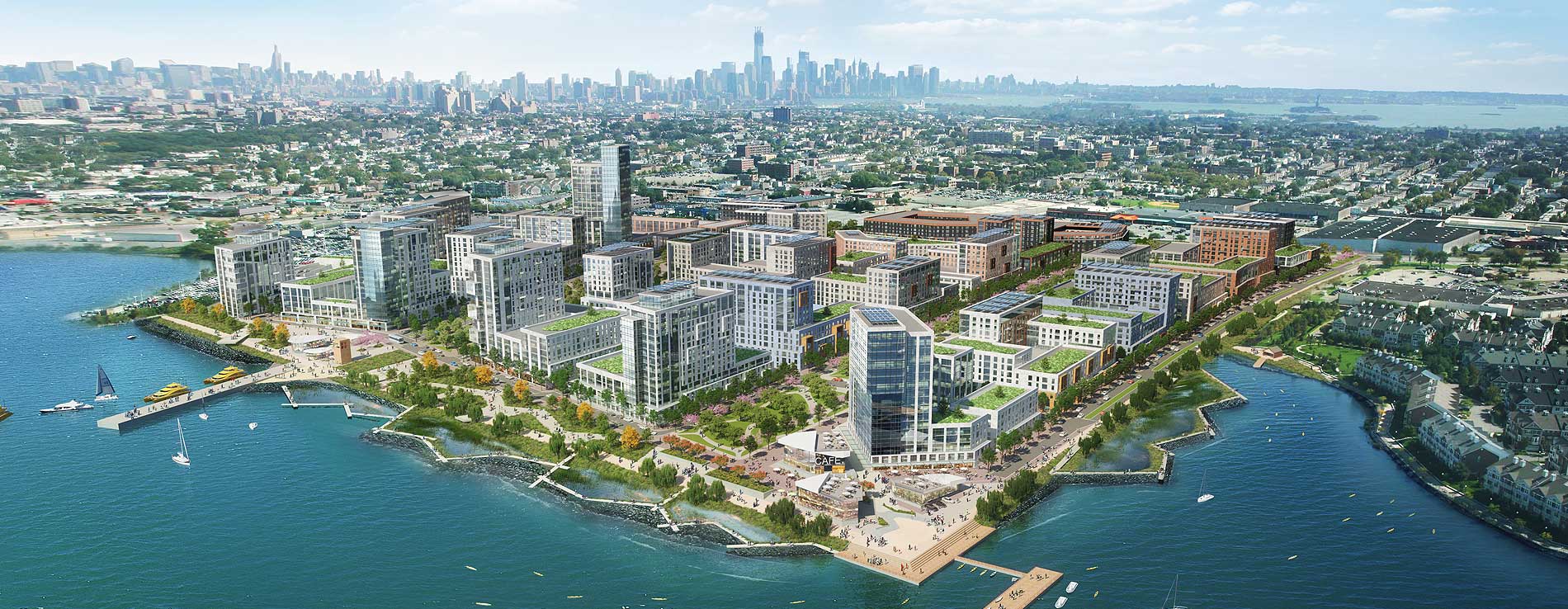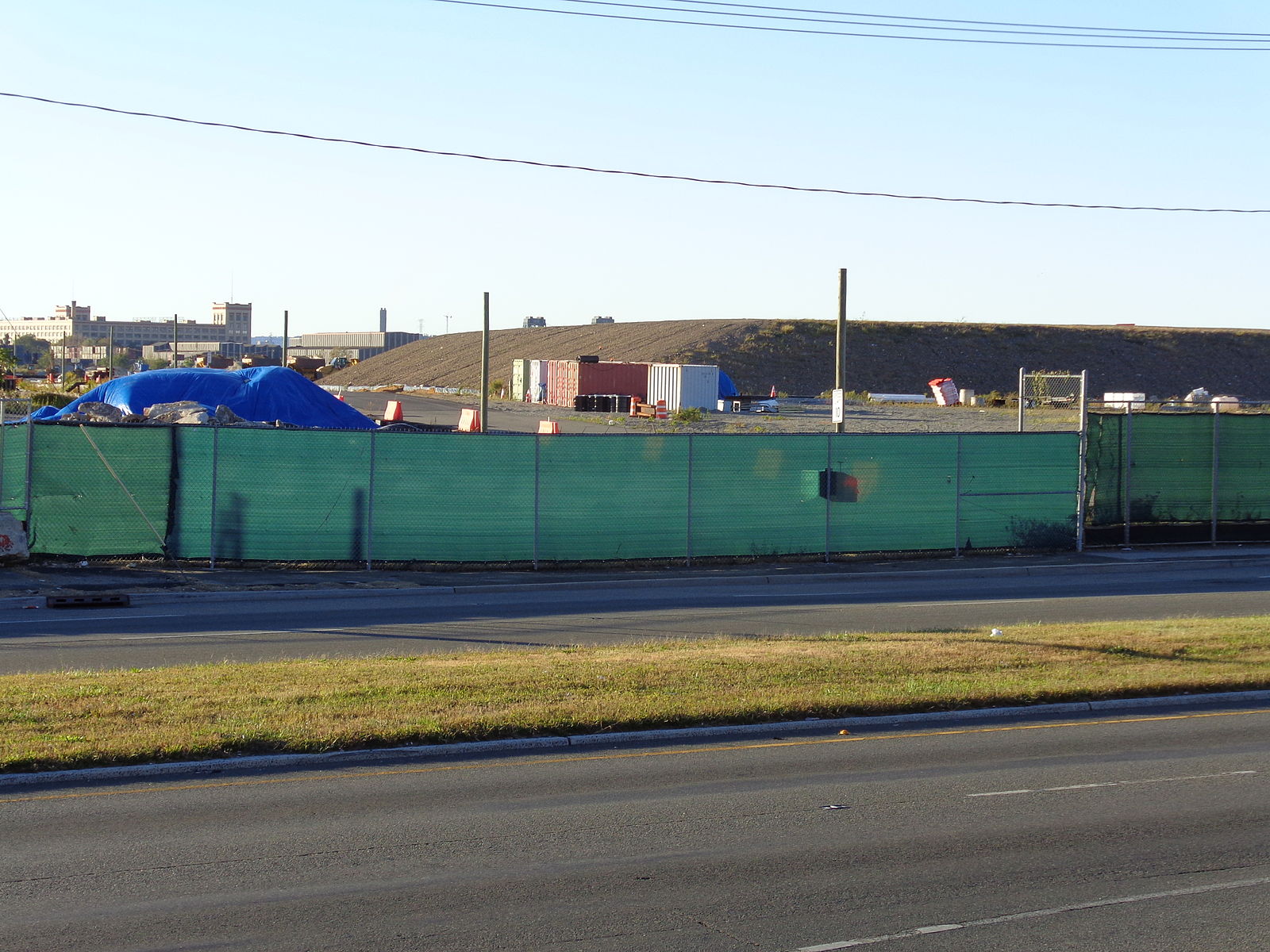Photo courtesy of Hudconja / Wikipedia.
Jersey City Mayor Steven Fulop calls it potentially the “largest mixed-income community” in the region. Spanning 100 acres along the Hackensack River is the city’s vision for an economically inclusive, environmentally sustainable and transit-oriented neighborhood called “The Bayfront Redevelopment Plan.”
It took years for a plan like this to be even plausible for the West Side location, which underwent a massive chemical cleanup following years of chromium exposure. The company that mainly owned Bayfront, Honeywell International Inc., partnered with Jersey City in 2008 to transform the uninhabitable wasteland into the now-proposed Bayfront.
Even though the cleanup was reportedly finished in 2018, massive construction has yet to begin in the area. The biggest developments in this plan have more to do with the project’s finances than putting a shovel to the ground.
The first major move came when Jersey City purchased Bayfront from Honeywell the same year of the cleanup’s completion for a $170 million bond. The goal was to increase the affordable housing requirement from 5% in the previous plan to 35% under Jersey City jurisdiction.
Founder of the Boricua Community Center Reverend Angel said he is not opposed to development but does not agree with Bayfront’s proposed plans. The Boricua Community Center is a grassroots organization promoting the advancement and civil rights of Puerto Ricans in Jersey City. The nonprofit has been bolstering its suggestions to make the Bayfront project more inclusive than the project claims to be by including “two public housing complexes, ensure 100% affordability, broaden income eligibility, provide Section 8 vouchers and to seamlessly integrate ‘school’ into the Jersey City public school system.”
Angel pointed out that the project’s master plan does not reveal how much square footage is delineated among the promised 8,100 units but there are estimations for retail space. He also said there are no buildings designated for disabled, seniors or veterans, who are among the people in most need of affordable housing.
“We want to buy properties and have our own homes so by giving that 100 acres of land, public land, to this single development entity also eliminates that opportunity for homeowners,” Angel said.
The Jersey City native explained that there is a community of Puerto Ricans and Latinos who live in downtown on Manila Avenue, whose buildings have reportedly never been renovated since it’s been built. He described the living area to be crawling with roaches and rodents, making the people who live there believe that that’s “all that can be done.”
“It’s not acceptable for my people to live like that and I say not just my people but no one should be living like that in Jersey City and it’s important if we have 100 acres of land to just give away and build on that we build new complexes to house our residents that need it the most,” he added.
There are aspects of the plan, Angel said, are helpful such as expanding the light rail to reach more people.
While Mayor Fulop had originally pushed for 50% affordable housing, the Jersey City Council eventually approved this increase reserving 35% of the 8,100 prospective units for people making 60% or less of the area median income (AMI).
According to data from Affordable Housing Professionals of New Jersey, the median income in Hudson County is $84,288 for one person. Using this standard, single-house residents making up to $50,572 could apply for Bayfront’s affordable housing. Jersey City defines one-person households earning $42,600 as low-income, below Bayfront’s requirement. Raising the affordable housing limit broadens who can apply for it decreasing the chance of a low-income or very low-income household securing a unit.

Details like the price of rent, square footage for each unit and included amenities have yet to be determined. There will be many community features like outdoor grills, three parks, a school and more. Not to mention up to 340,000 square feet of commercial retail.
“Bayfront will reshape the mold for future large-scale projects, with the most affordable housing of any private mixed-income community of this size in the country. In concert with our residents’ needs and expectations to create equal housing opportunities for all, with the fruition of this project’s vision, Jersey City is demonstrating to the country what is possible when we don’t let the typical boundaries limit our development,” Fulop wrote in a statement.
It took years for the appointed Bayfront Advisory Board with the Jersey City Redevelopment Agency to select a developer who had the same standards for affordable housing as the city. They came upon Pennrose LLC and Omni America LLC who formed the joint venture Bayfront Development Partners LLC. Pennrose LLC has a history of affordable and assisted housing construction across the country. Just this year, the company broke ground in Phoenix for an affordable housing project catered to seniors.
The Jersey City Council granted Bayfront Development Partners LLC a 30-year payment in lieu of taxes for this project. Instead of taxes, the developer will annually pay the city 5% of income earned from rent and an additional 10% of any other residential or commercial income.
Tax abatements like these help incentivize developers to undertake a construction project when it may be financially beneficial. In the case of Bayfront, enforcing affordable housing limits the potential revenue as opposed to the market rate value.

“It’s become more of a cold, in my opinion, a colder place than a warmer place and it’s warmer for those living in those luxury houses and warmer for those who actually want to participate in those luxury units and those developments but it’s cold for us because we’re sitting here, paying these taxes so that you don’t,” Angel added.
“… The 30-year tax abatements for me is on the backs of our tax-paying dollars of single-family homeowners, the homeowners that have been here for several years because what that abatement does it places the tax burden upon us again.”
Ground was supposed to break in 2023 for the project’s first building, but as far as any real construction, that remains to be seen.
“For that long I would think they should have come up with something better than this crap,” said Angel.
There has been a report that the project will start at the end of the year, but it’s unclear exactly when. In September, Mayor Fulop announced after a city council meeting that the project will proceed.


